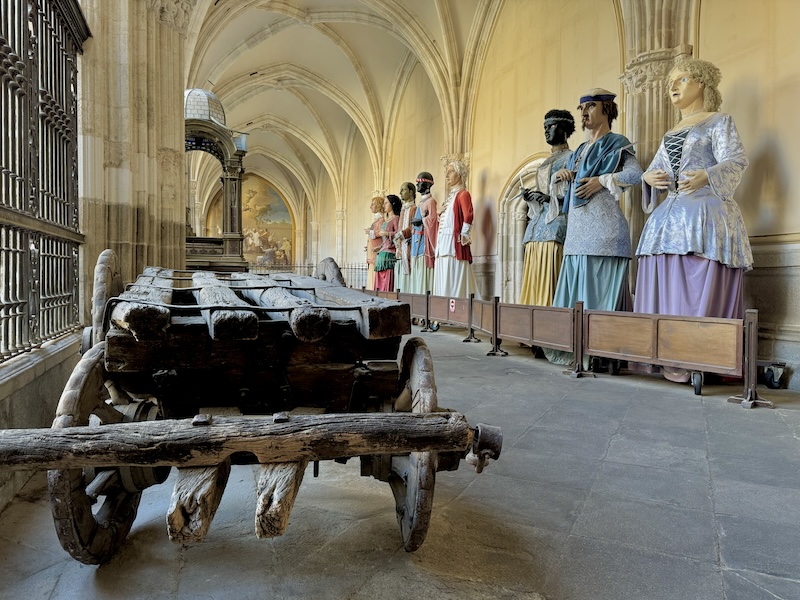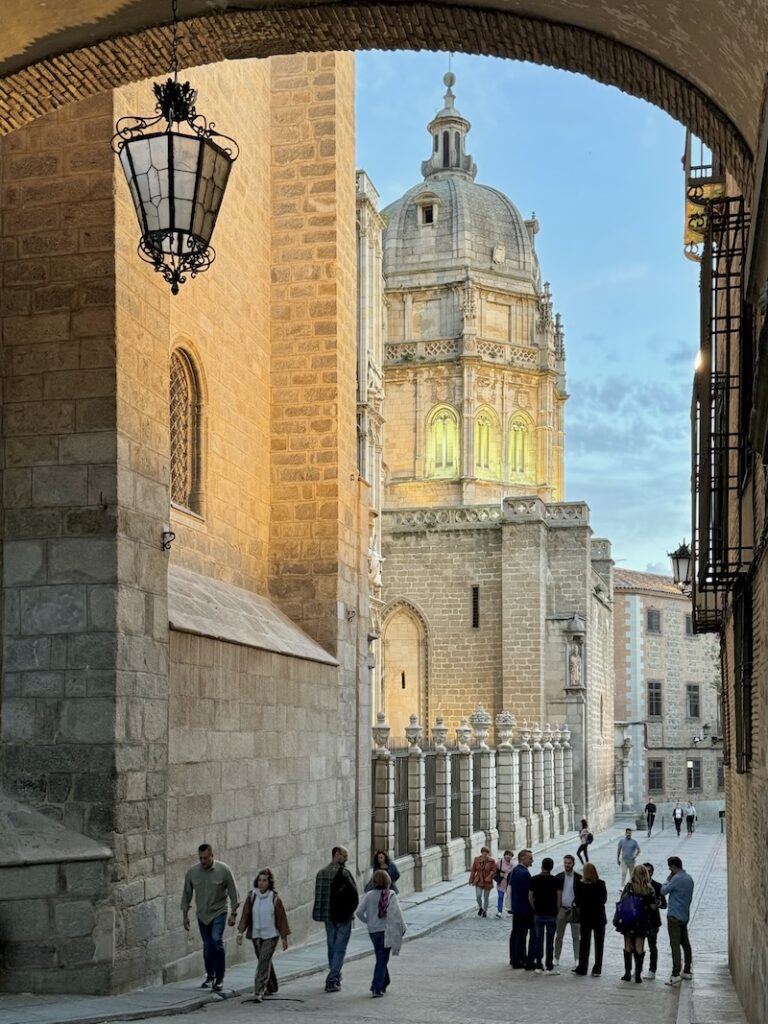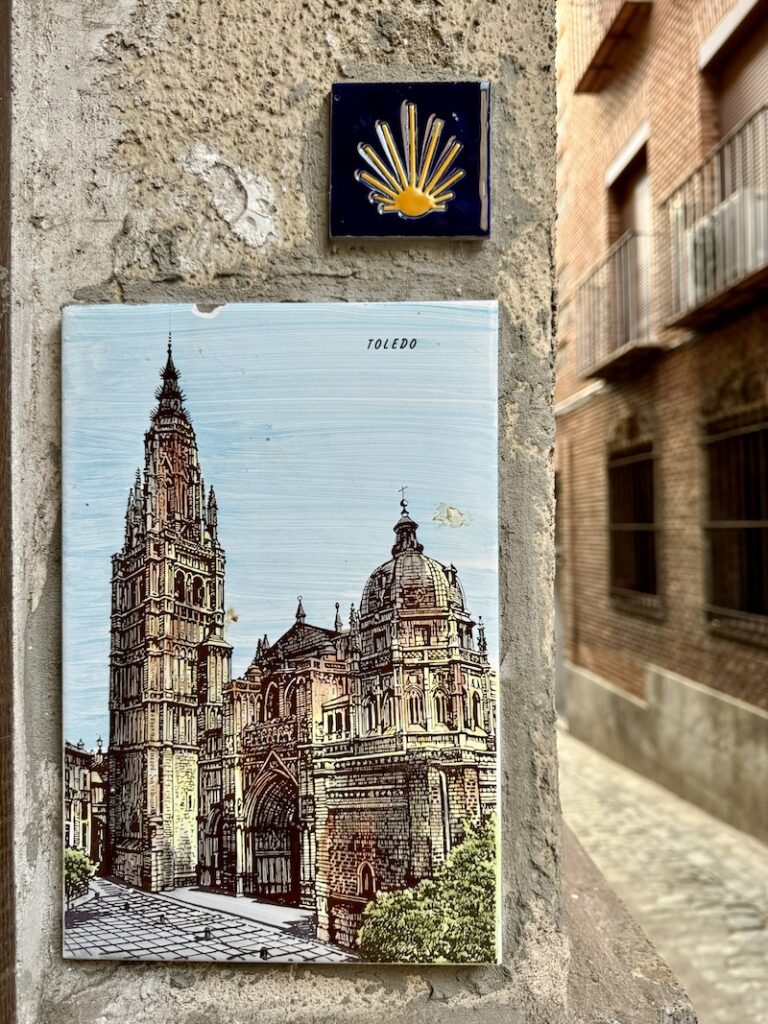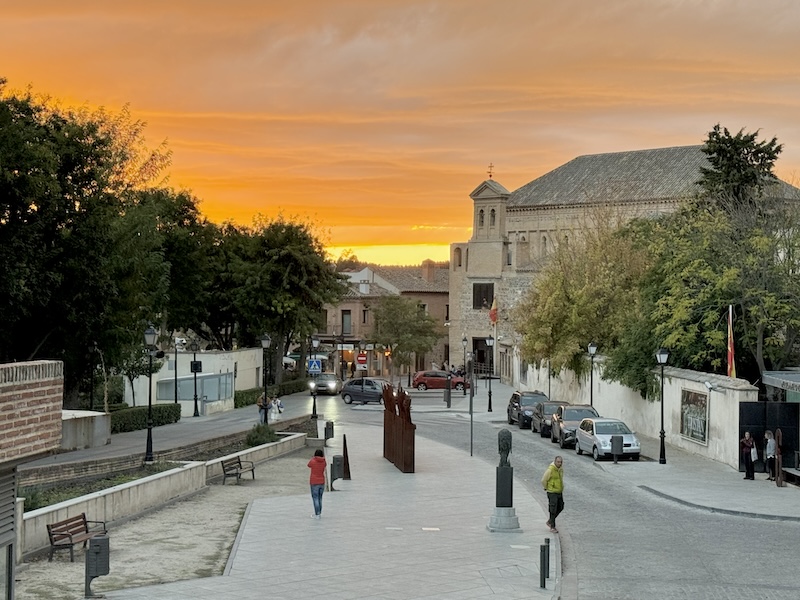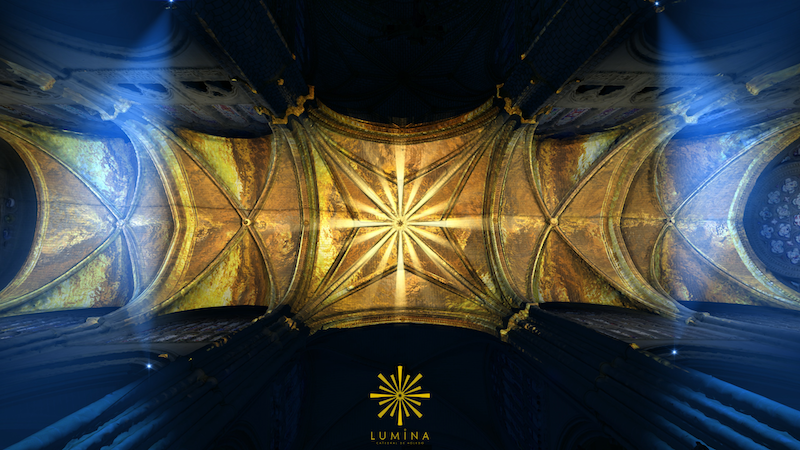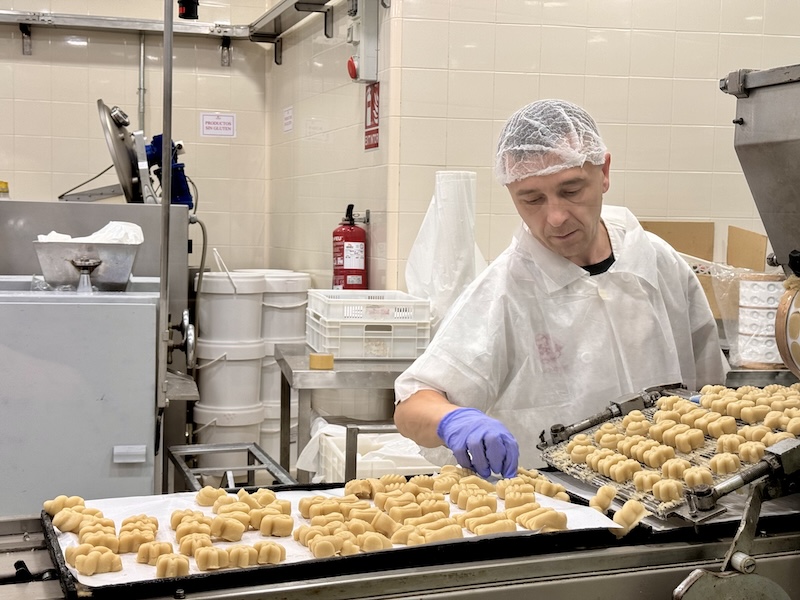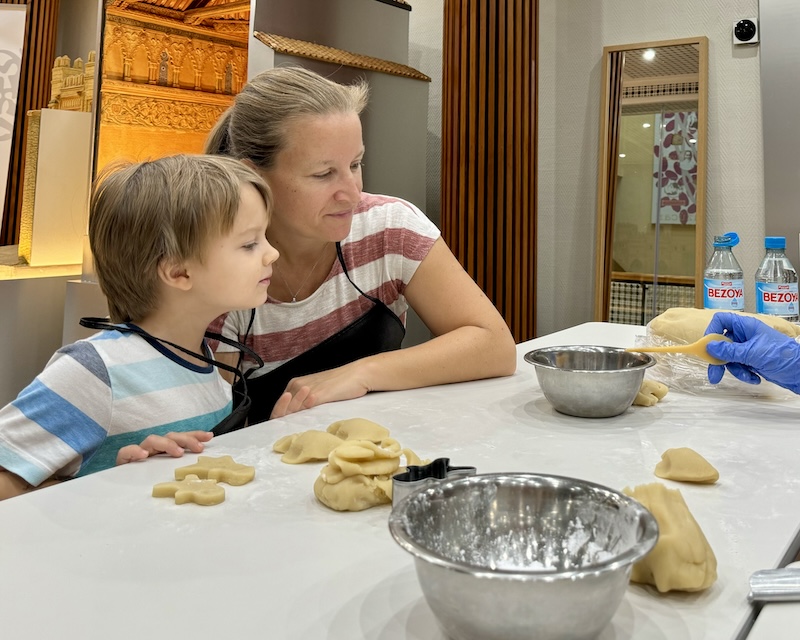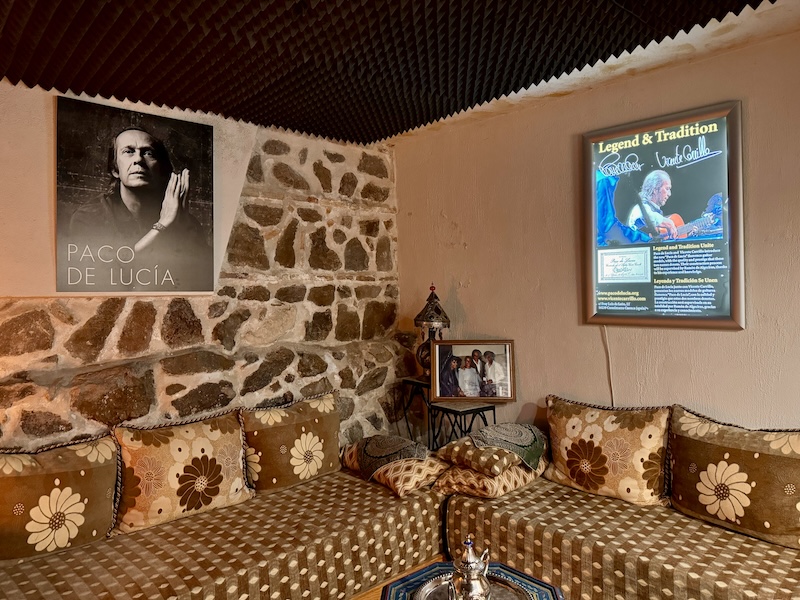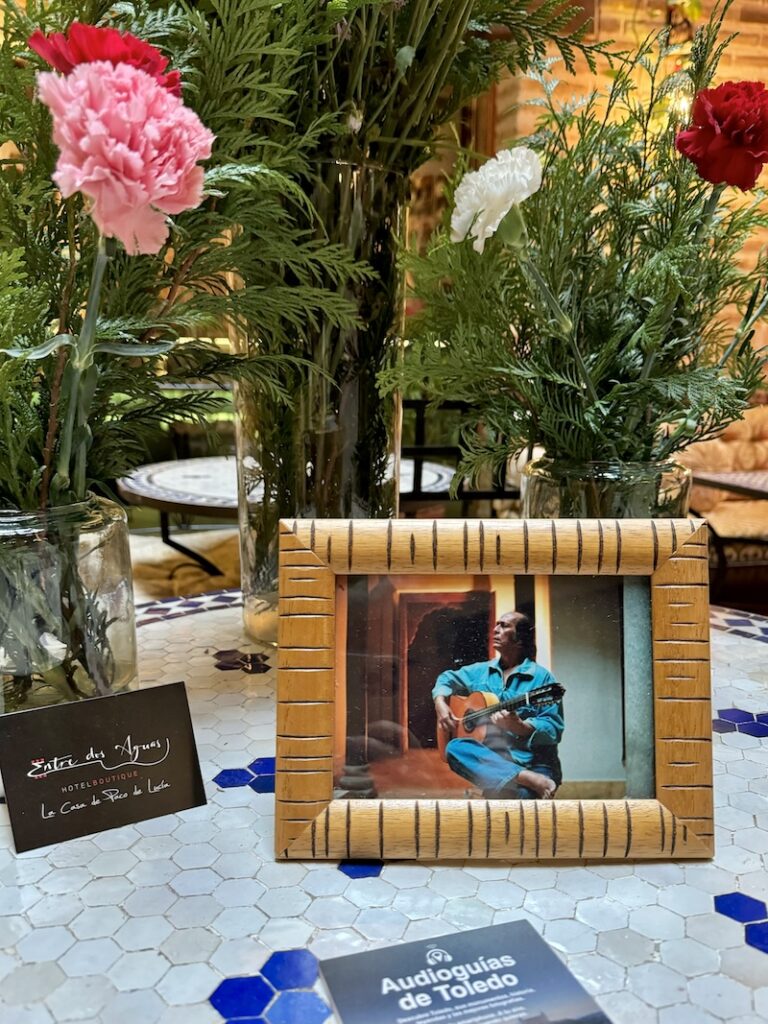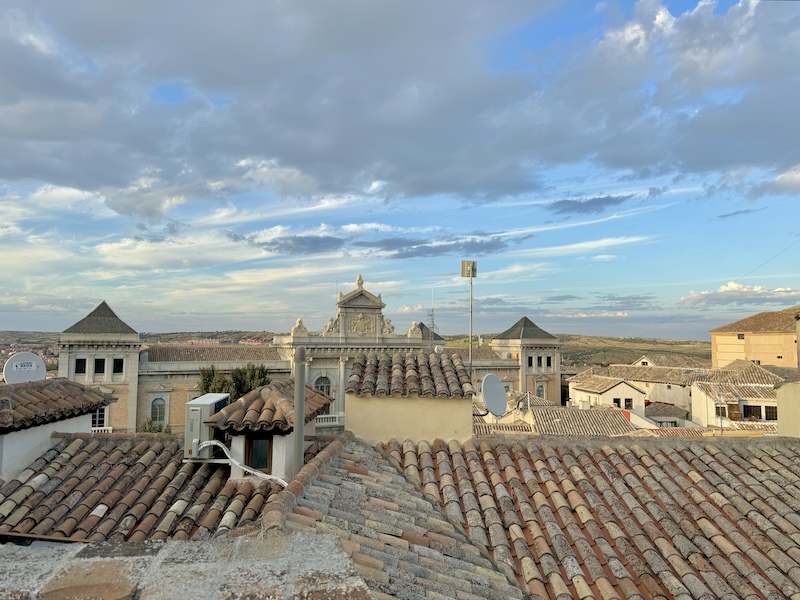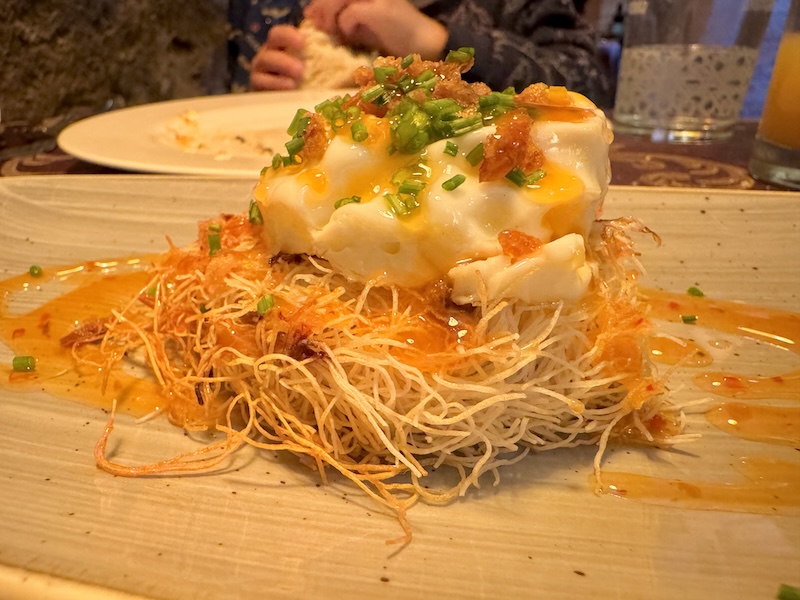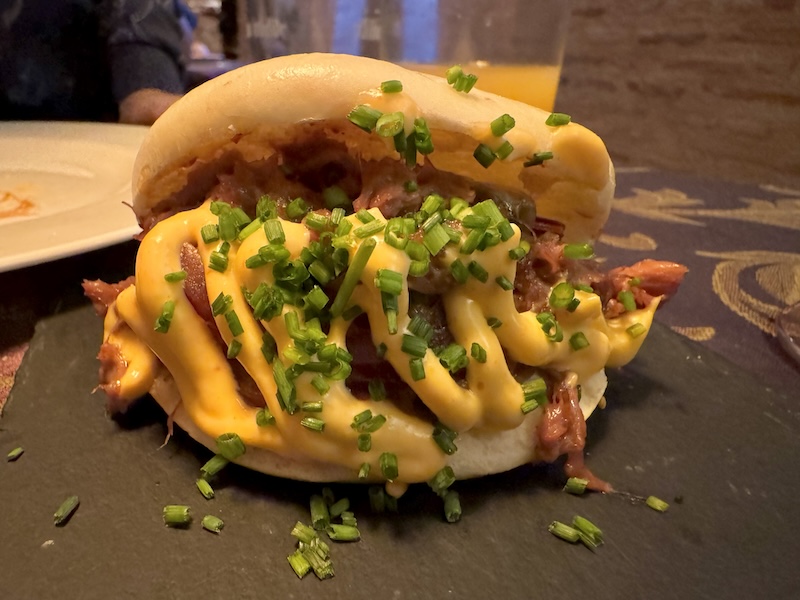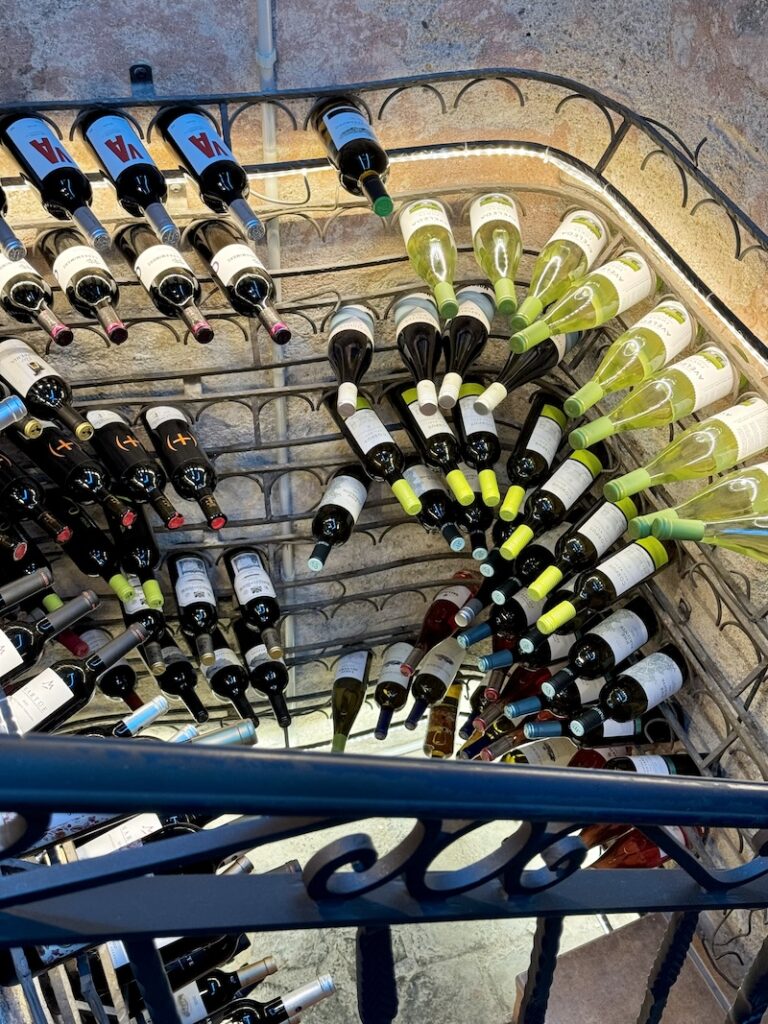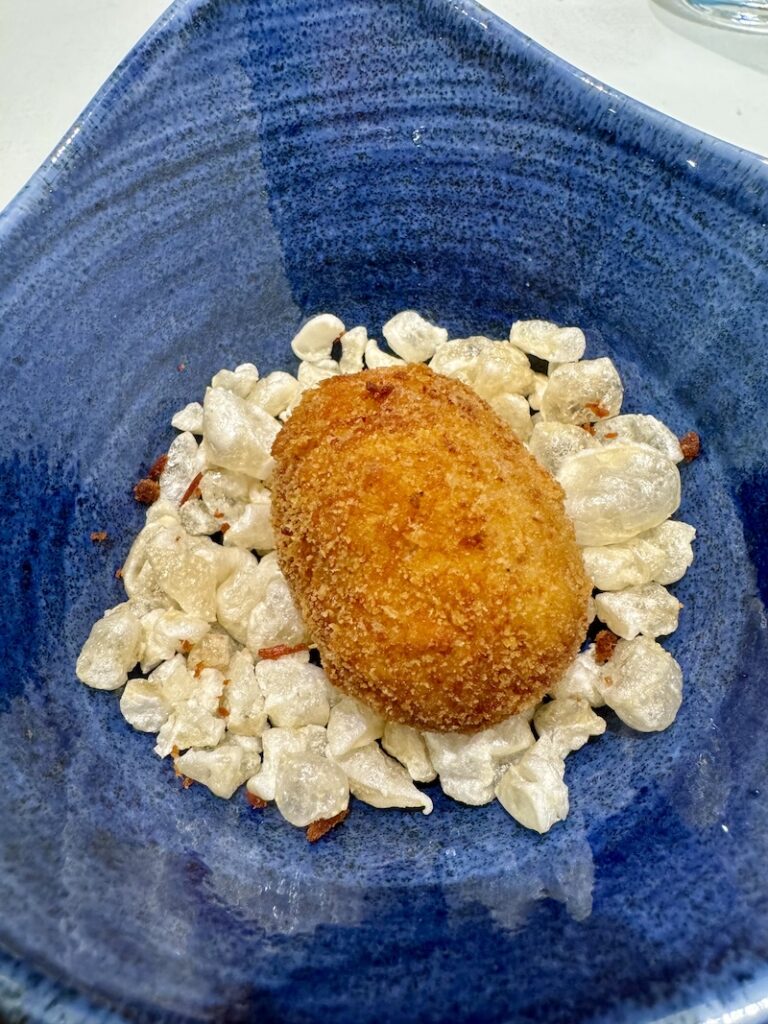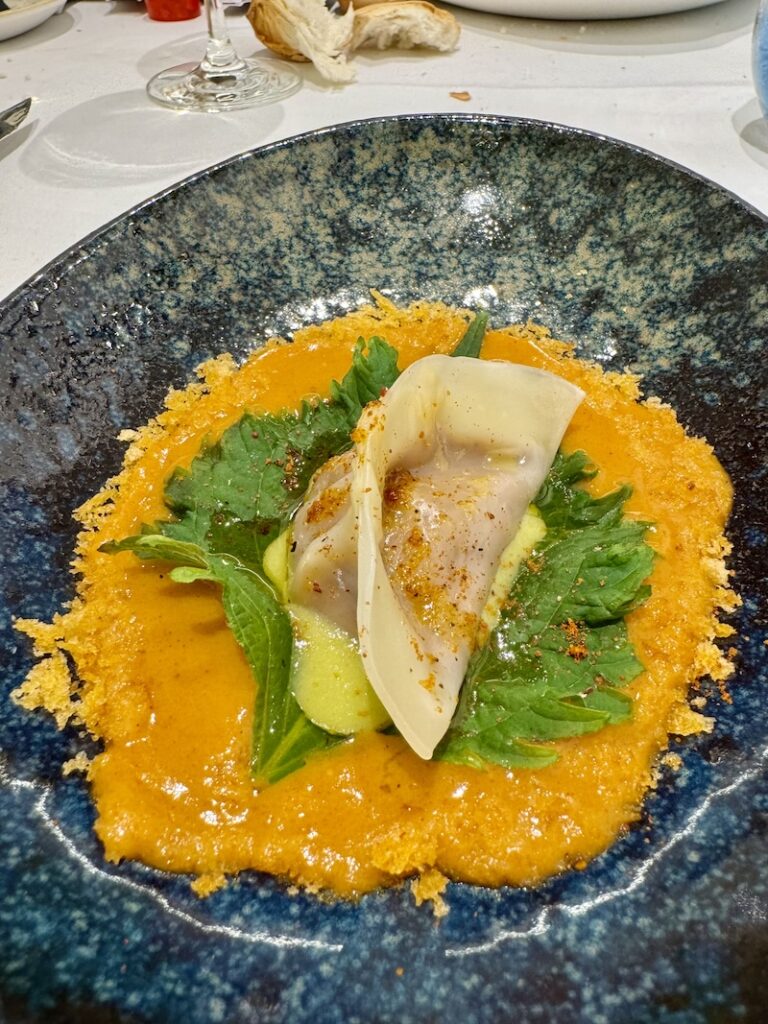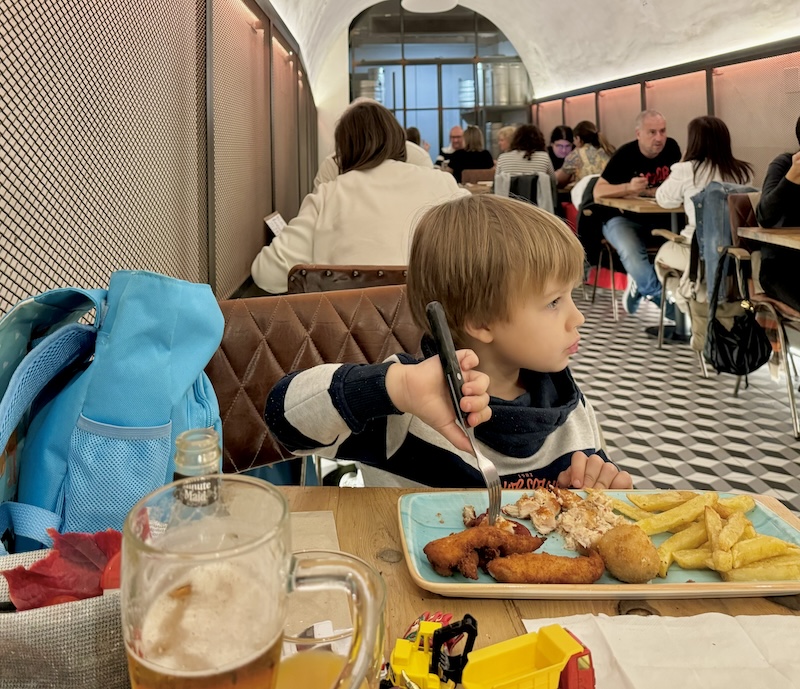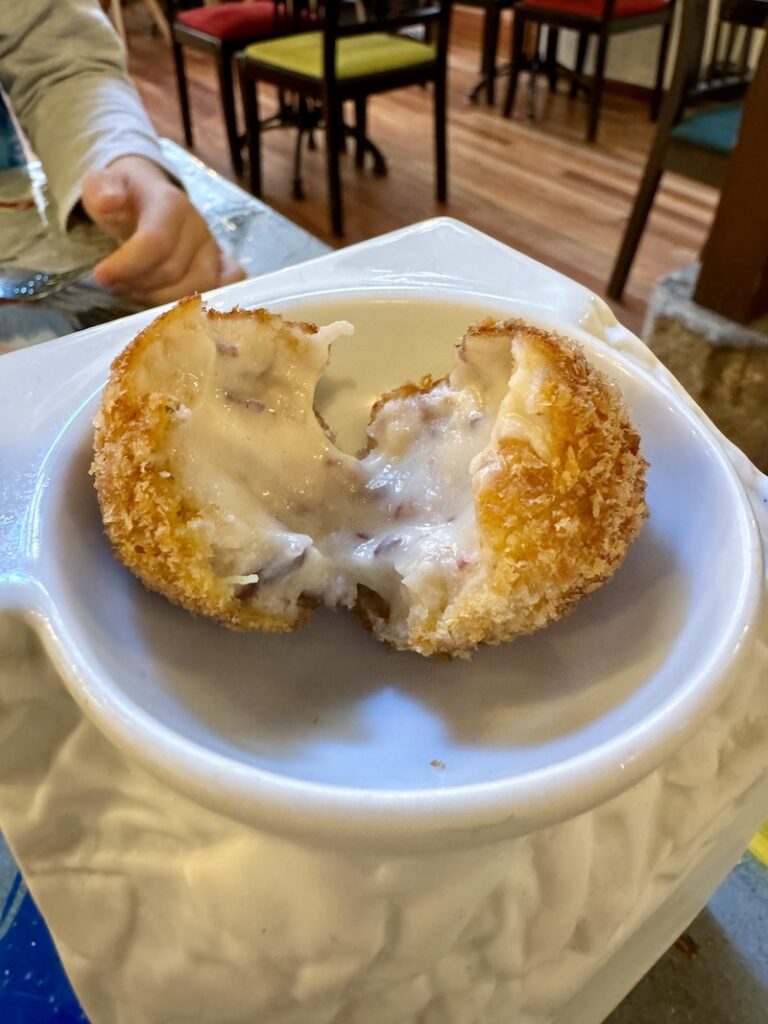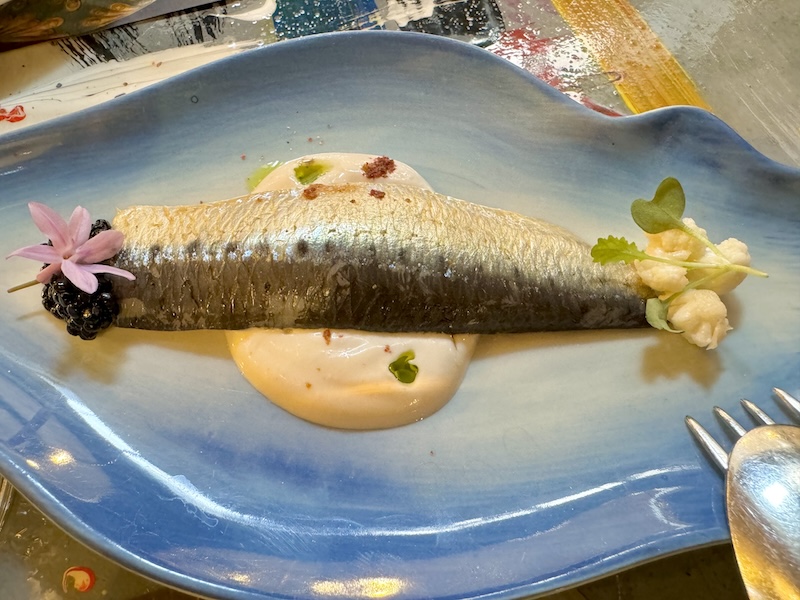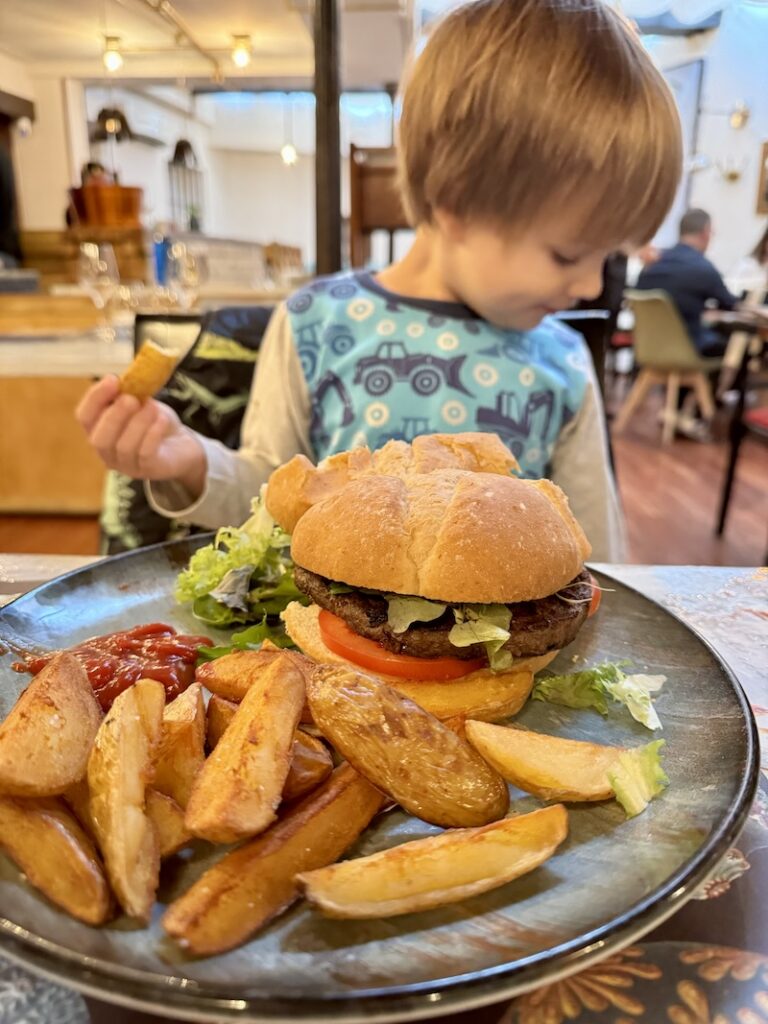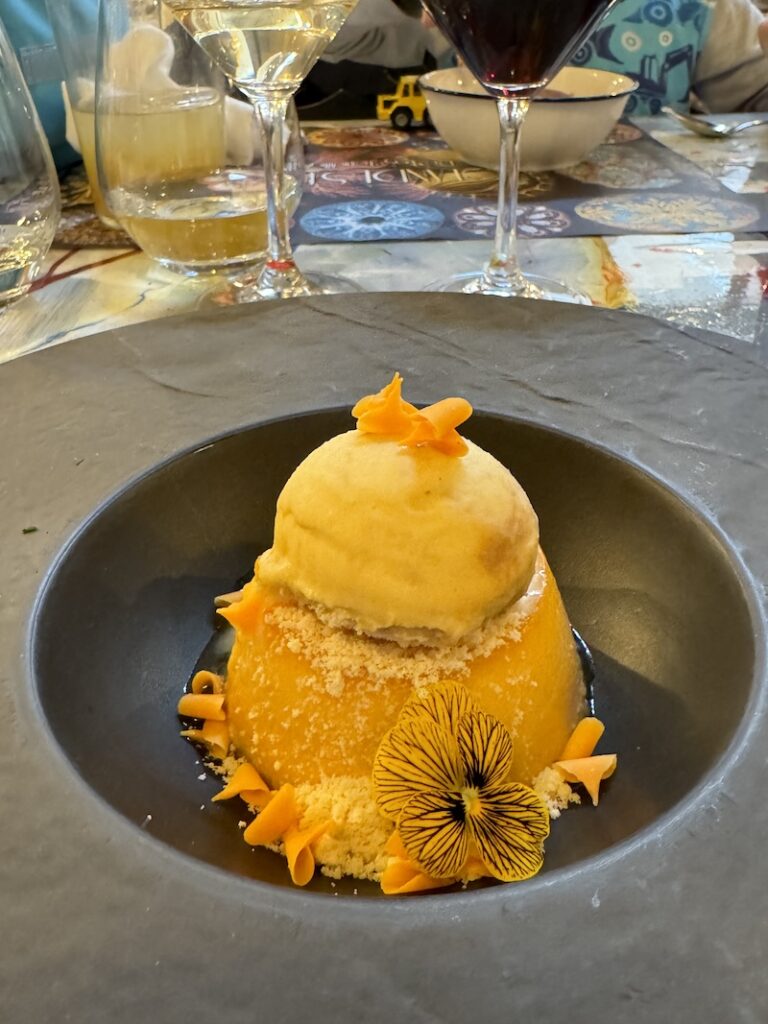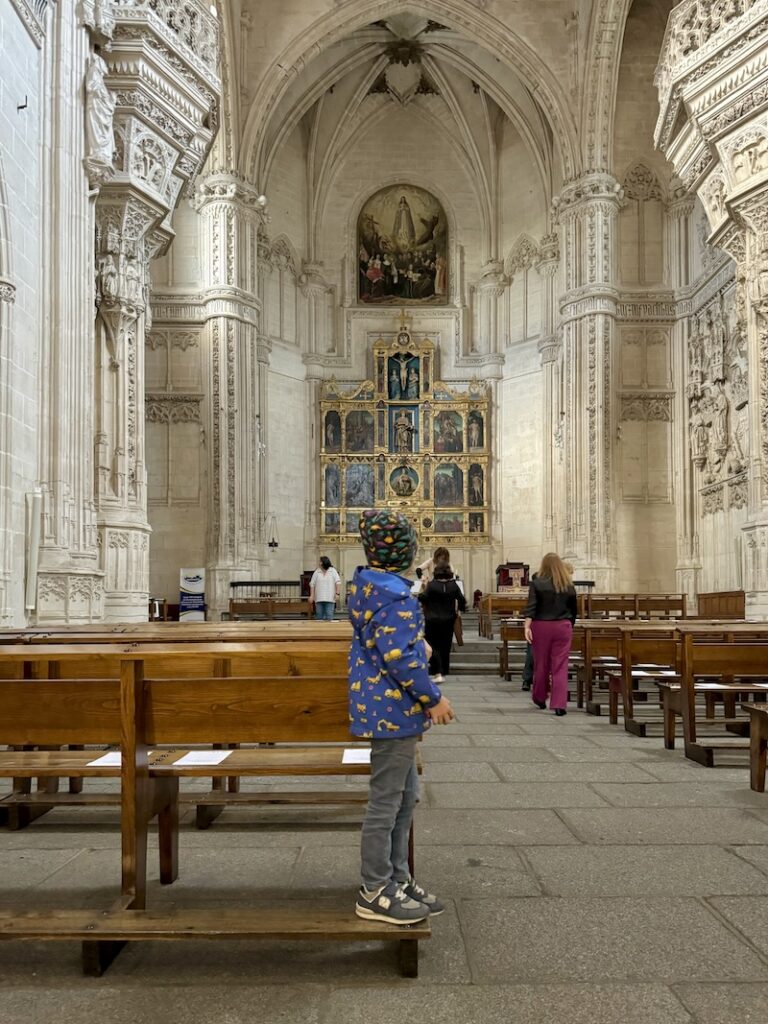Toledo really put a spell on me. Almost 20 years ago, I lived in Madrid for six months and (unfortunately) only visited Toledo once. So it’s all the better that I was able to spend a whole three days and nights there this time and really immerse myself in the city’s extremely fascinating history .
Since then, I have to say that if I were to visit Madrid again, I would spend the nights in Toledo – the city is just so exciting and beautiful!
Below, you can find all my travel tips for discovering the city. My older son Liam also joined me on this trip – because yes, the UNESCO World Heritage city of Toledo has so much to offer for children too.
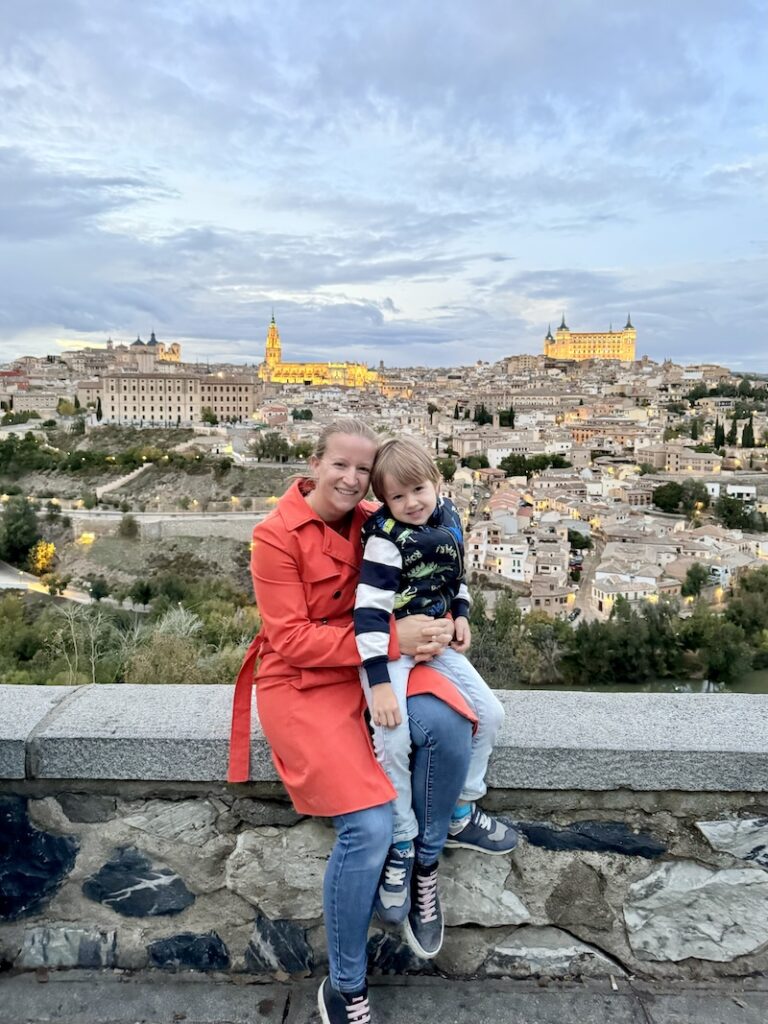
Out and about with Liam in Toledo: The Mirador del Valle at dusk provides a particularly beautiful moment and place to contemplate Toledo and fall under the city’s spell.
4000 years of history in Toledo, related during an interesting guided city tour.
It would be impossible to describe the history of Toledo in one paragraph. Our German-speaking city guide Mariló de Ancos, who leads Liam and me through Toledo, is a lot better at it.
Just this much: the perfect location of the rock on which the city is built (Toledo is surrounded on three sides by water, the River Tagus) probably served as a place of refuge for human settlers from very early on. Named a city by the Romans, expanded into a fortress by the Arabs, chosen as a seat of power by the Christian kings and characterised by the peaceful coexistence of Jewish, Christian and Arab inhabitants – Toledo offers everything you can imagine in the fascination of a famous historical place.
In this respect, Toledo also seems much more interesting to me than Madrid (sorry, dear capital of Spain) – after all, the latter only became more important around 500 years ago. So if you are interested in cultural splendour and historical diversity in a concentrated, magnificent form, then Toledo is just the place for you!
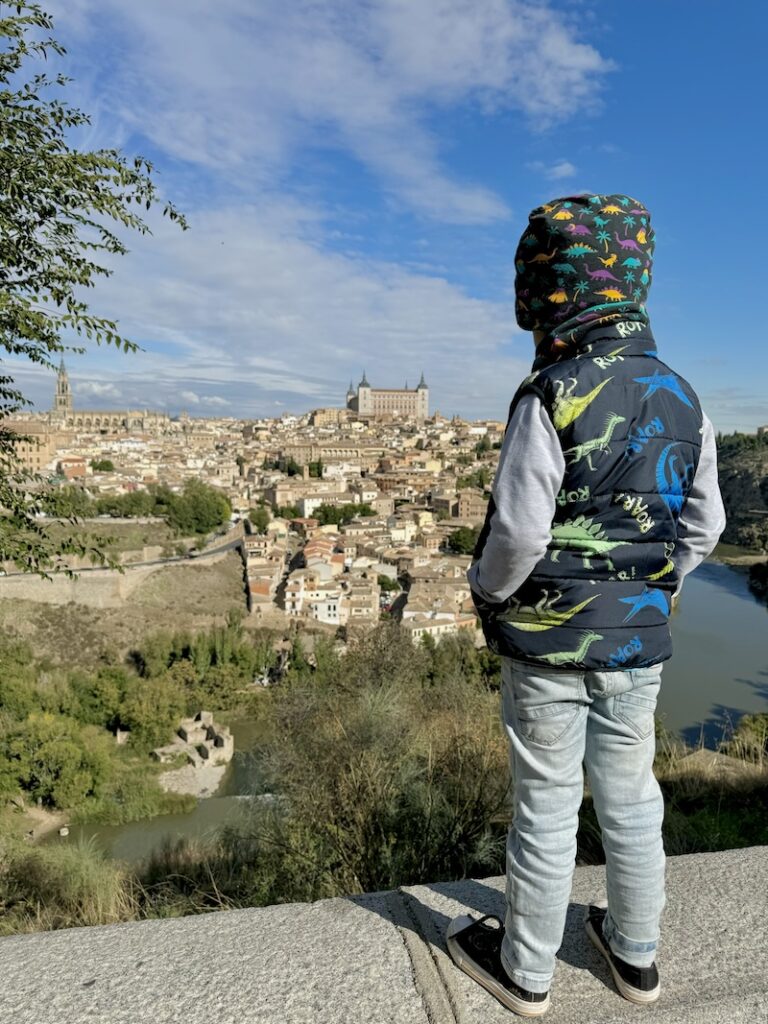
Even or especially as a child, you can marvel at the beautiful city of Toledo in the heart of the Iberian Peninsula …
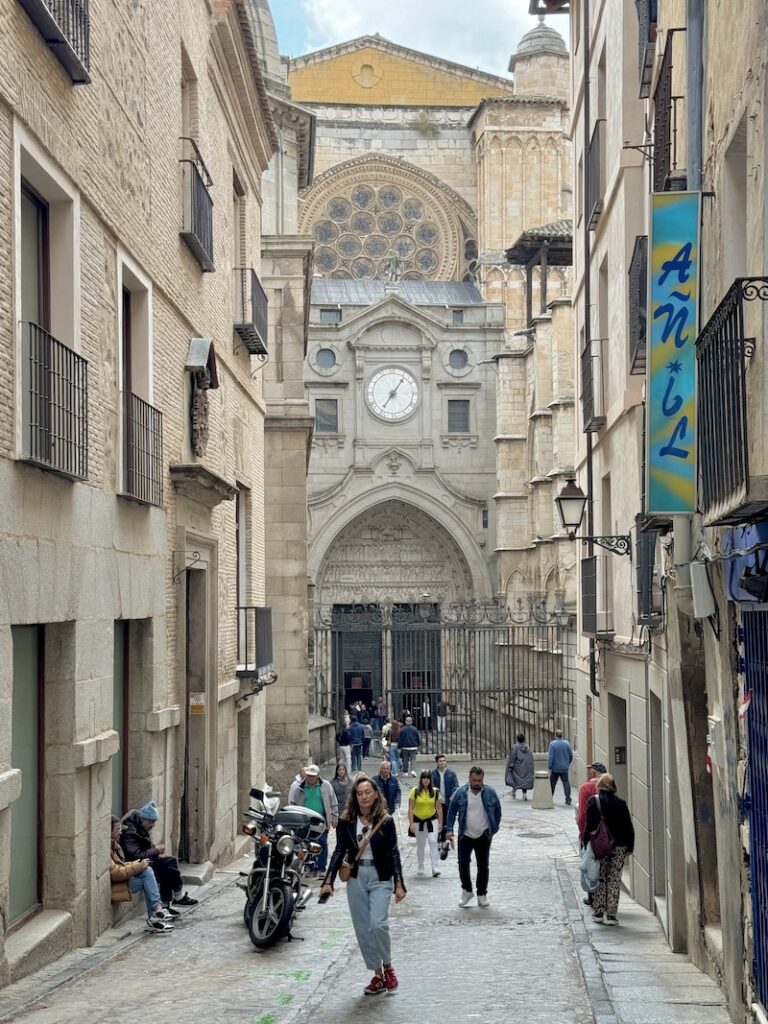
… the many important building works of art, such as the Puerta del Reloj at the outer facade of Toledo Cathedral …
Lumina Catedral de Toledo: Impressive sound and light show on (church) history in Toledo Cathedral.
On the evening of our arrival, a very special kind of spectacle awaits us. Sound and light shows, so-called “mappings”, i.e. projections on the walls of buildings (inside and outside) are now widespread. Here in Toledo, the same such show impresses me with the fascinating combination of one of Spain’s mightiest cathedrals and the interactive narrative of the city’s (church) history. In other words, the history of Toledo is told in several languages (via audio guides) and brought to life in a unique way through music and light.
Incidentally, the “Lumina Catedral de Toledo” is offered several times a week; I highly recommend booking tickets in advance – the crowds were also large on the day we visited, a normal Thursday evening in October.
Behind the scenes at Santo Tomé, the famous marzipan factory in Toledo: we design our own marzipan figures!
One of my favourite activities while travelling, creative travel, is also possible in Toledo! We meet Ana Mesa Gárate, who is the seventh generation to run the family business Santo Tomé. She leads us from the salesroom directly into the marzipan factory behind the shop.
We are amazed at the skilful intertwining of machine production and genuine manual work: it is the combination of the two that makes the quality of Toledo’s famous marzipan possible in the desired quantity. And quantities are what it takes: 70 tonnes of marzipan per year, half of which (35 tonnes) is sold in the two months before Christmas alone (and another 80% of this is sold directly in the two weeks before Christmas). Such is the popularity of Toledo’s marzipan, the production of which has a long tradition in the city.
As we creatively mould our own marzipan figures to take home, Ana tells us everything we ever wanted to know about marzipan and much more. Liam is thrilled!
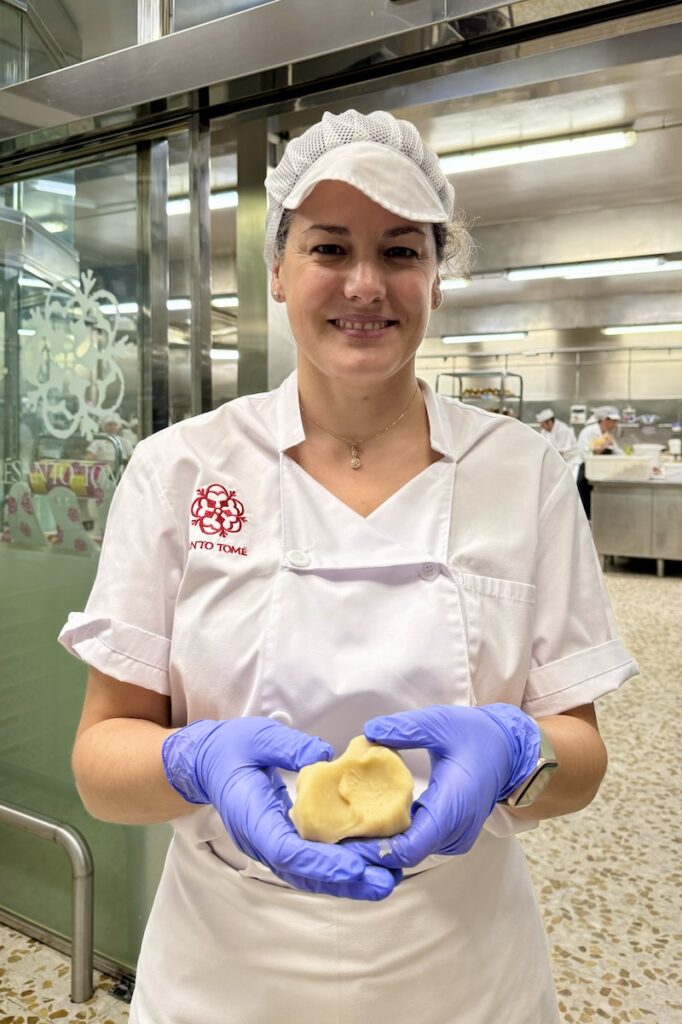
As guests in one of Toledo’s most famous marzipan factories, Santo Tomé, we meet the friendly manager Ana Mesa de Gárate …
Spend the night in Toledo: the boutique hotel Entre Dos Aguas was once home to the famous musician Paco de Lucía.
In my travelling life, I have already stayed in some wonderful boutique hotels around the world. The Hotel Entre Dos Aguas in Toledo promises to remain in my memory for a long time to come. Why? What does this hotel have that others don’t? First of all, a lot of history – at least 500-600 years of it in the Jewish quarter of Toledo, which can also be recognised by the way the building is constructed (once numerous families lived here, each on their own floor, under one roof).
But the name “Entre Dos Aguas” comes from a completely different, more “modern” circumstance: Paco de Lucía, one of the world’s best Spanish flamenco guitarists, whose most famous album is called “Entre Dos Aguas”, once lived right here – Liam and I spend the night in his family’s children’s room, and the master’s old recording studio can still be admired in the basement. Wow. So we spend the night in Toledo surrounded by wonderful music; once at lunchtime we even have the good fortune of a live session by a young musician in honour of Paco de Lucia. Check it out.
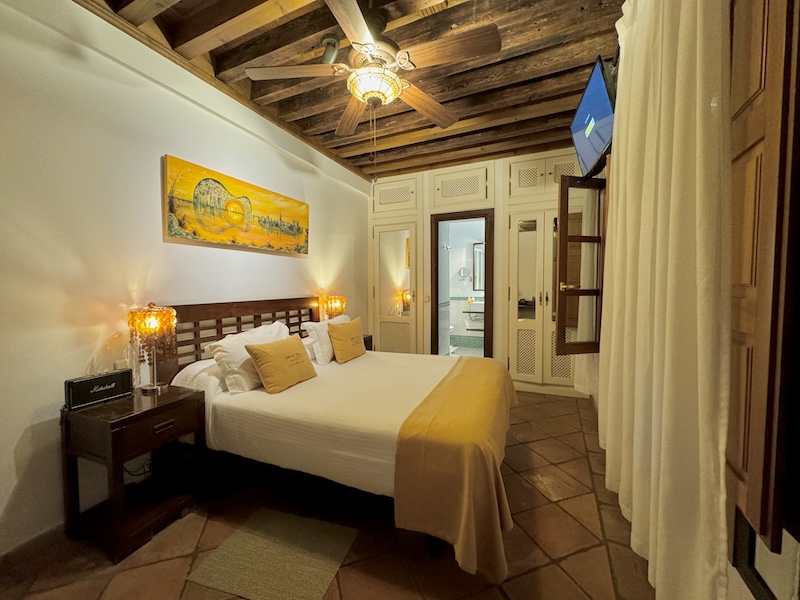
Well hi there, Toledo! Spending the night in the former home of the world-famous musician Paco de Lucia …
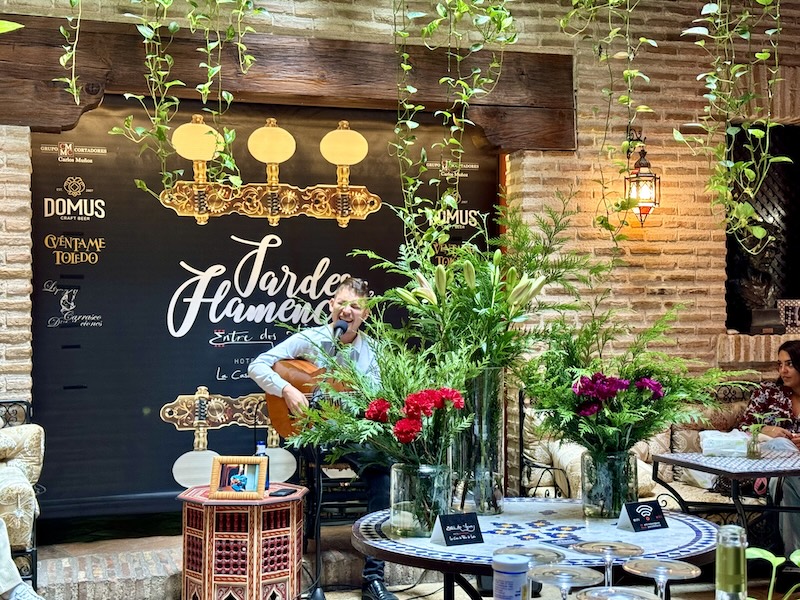
… this was also the case with this musical performance, where Liam and I were lucky enough to enjoy Paco de Lucia’s music performed live.
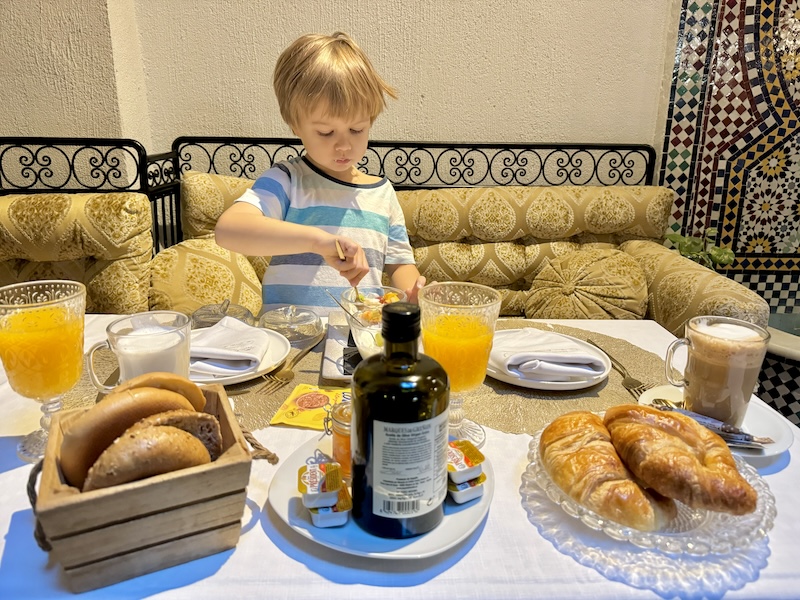
Apart from being a feast for the eyes and ears, the hotel, which only has five rooms, also offers a really great breakfast …
Don’t miss these culinary hotspots in Toledo (be careful, appetising!).
Toledo offers an incredible density of culinary hotspots that I didn’t know or suspect about until now. Unbelievable just how well you can eat in this wonderful city!
We follow the recommendations of the local tourist board and find ourselves in numerous, truly excellent restaurants in the city. They all belong to the Raíz Culinaria quality brand of the province of Castilla-La Mancha, known for their flavourful tapas and creative dishes (with a choice of fish, meat or vegetarian). The “Raíz Culinaria” brand, a kind of regional tavern culture in the heart of Spain, guarantees traditionally prepared dishes whose essence is known far beyond the borders of the region.
La Cave: Traditional restaurant right in the heart of Toledo’s old town
La Cave is located right in the centre of Toledo’s old town; the entrance is in a street so narrow that you can only get there on foot. It’s well worth the effort, we enjoy the start of our culinary journey of discovery of the city with a tasting menu: “quail’s nest”, a “sea waffle” (gofre de mar) and the “pan bao” filled with oxtail meat.
La Cábala: Deserving of a chef’s hat
I would have easily awarded the La Cábala restaurant a toque, we ate so extremely well there. Our special menu included …
… as well as butterfish, citrus salad, venison marinated in beer and honey with romesco sauce, and a creamy Manchego cheesecake. Heaven!
Good to know at this point: Most restaurants in Spain only open at 1.00 pm or 1.30 pm for lunch and at 8.00 pm or 8.30 pm for dinner. In any case, you quickly get used to the “shifted” times (compared to where I’m from, Austria at least); in between, a snack helps to bridge the time if necessary.
La Abadía: “Montes de Toledo” menu
A menu with the evocative name “Mountains of Toledo” – who could resist? “La Abadía” literally means abbey; the only connection to monastic life, however, is the brewing of a really good beer!
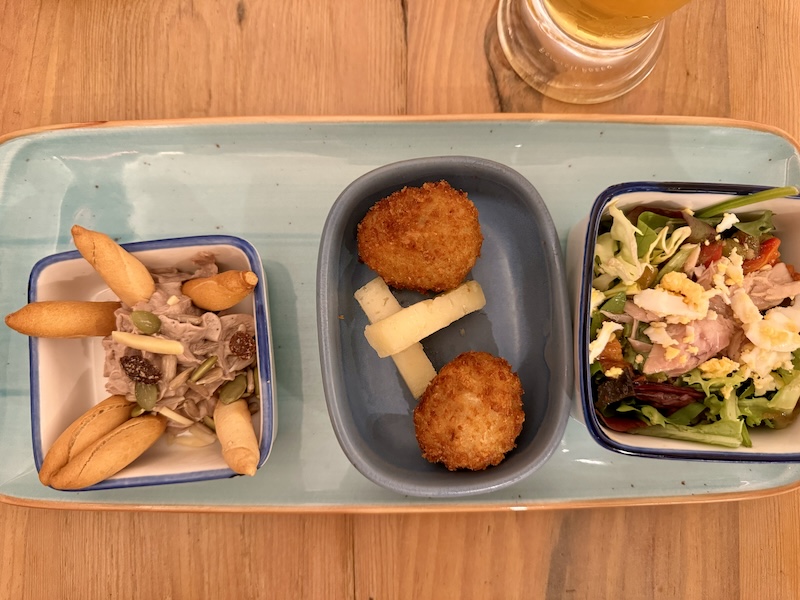
Starter at La Abadía restaurant in Toledo: Asadillo salad, croquettes stuffed with partridge and porcini mushrooms, and Manchego cheese with game pâté …
La Orza: Fine dining at the traditional Mesón restaurant
The Mesón La Orza restaurant is located in the centre of Toledo’s Jewish quarter. Here, too, we are welcomed to excellent food in the finest surroundings.
The menu reads like a culinary poem: jacket potato salad with salt and cod flakes, carpaccio of marinated partridge, semifreddo with mature cheese and pine nuts, tataki of venison with aubergines, spiced yoghurt and mango, thyme sorbet and, to finish, cheesecake with marzipan and coconut ice cream. Mmmh!
As if all that wasn’t enough, there’s a selection of typical marzipan delicacies for the “sweet finale” (which, understandably, we didn’t quite manage to finish …!).
Clandestina de las Tendillas: Top Lunch Table in Toledo.
The Restaurante La Clandestina de la Tendillas marks our culinary farewell from Toledo.
Here too, as in all the restaurants mentioned above, we receive an extremely friendly welcome. In addition to all the good food, we savour the crusty bread, the spiced olives and the aromatic coffee.
Travelling with children in Toledo: tips for families.
Toledo, like the rest of Spain, is really family friendly. Not even in a fine restaurant do you feel that you are not welcome with a child – we can still learn a thing or two compared to where I’m from.
I went everywhere I would go myself also with my five-year-old son (yes, even to the evening mapping show in the cathedral or the cultural city tour in the afternoon). Depending on the age of the child, it definitely helps to have a pram with you to rest in: Liam also dozed off during the day due to all the impressions, so he lasted longer in the evening, for example, in line with the “cultural time difference”!
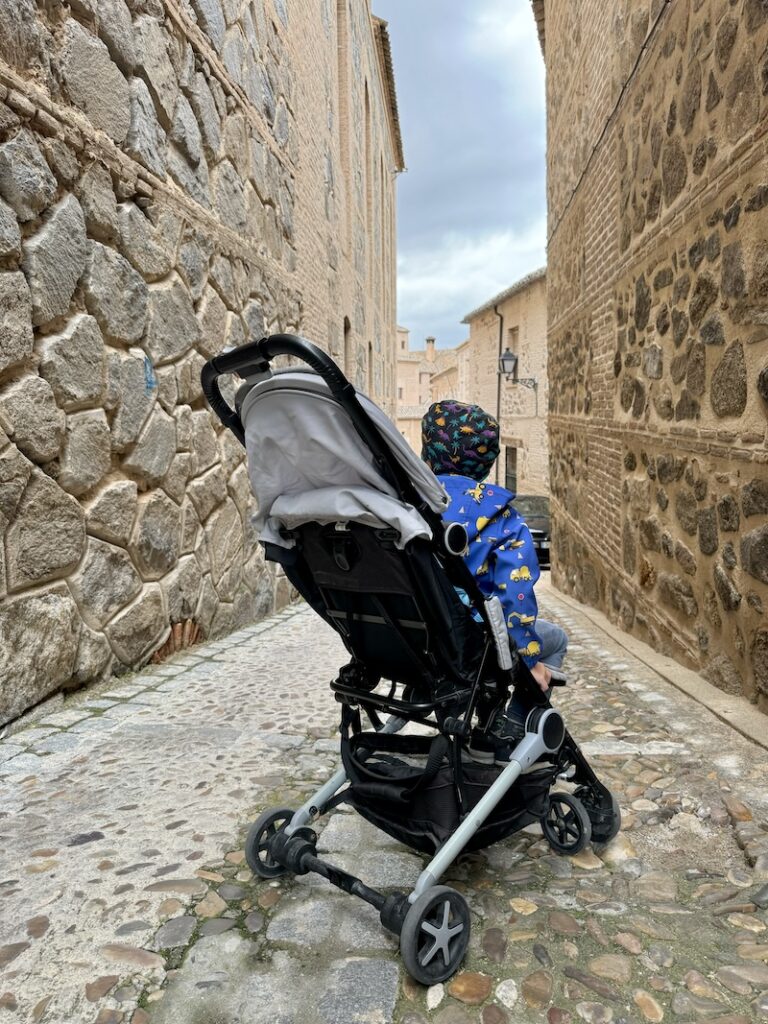
The streets of Toledo: Good at times with a pushchair, then more difficult to master due to the ancient paving. I can recommend a baby sling for babies and toddlers.
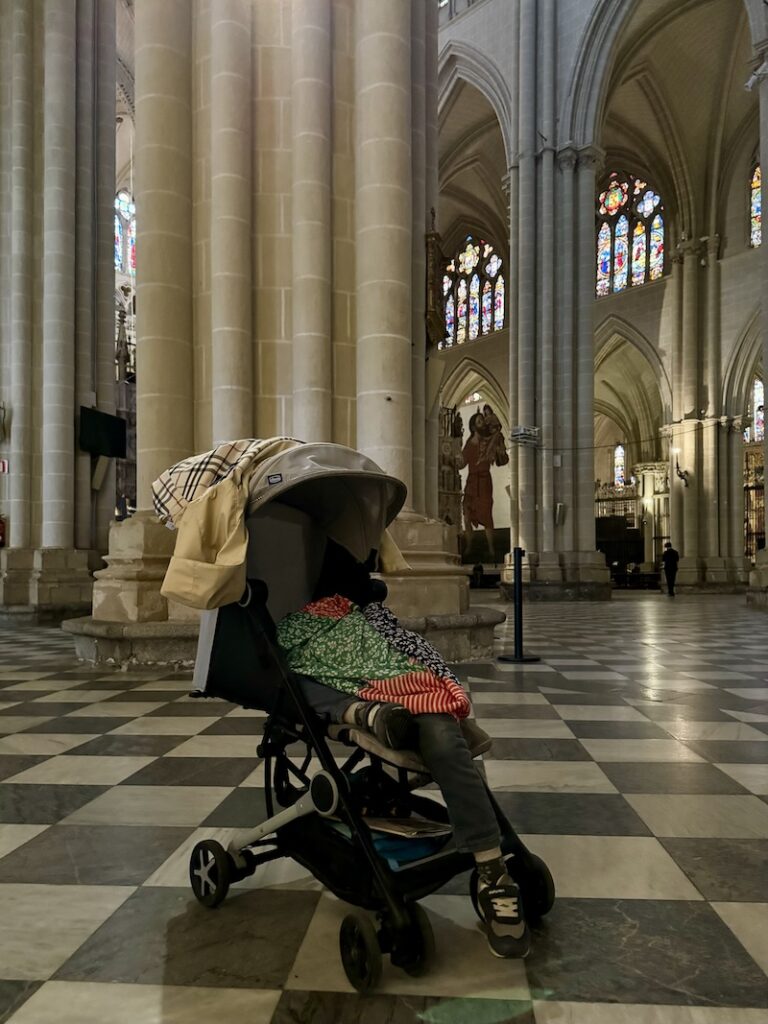
It’s good to take a nap in the middle of Toledo Cathedral – you can really go anywhere with a pushchair, including museums and the cathedral.
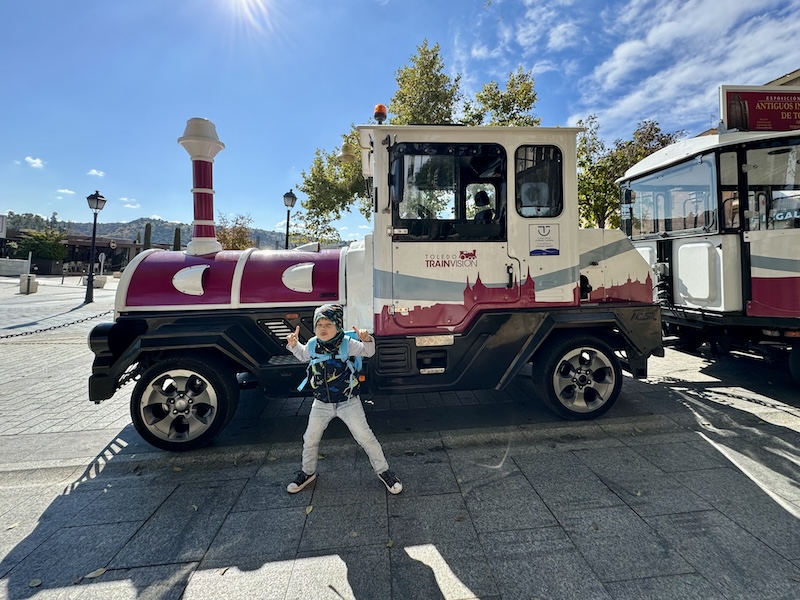
Must-Do when travelling with children in Toledo: Taking the tourist train in and around the Alcázar…
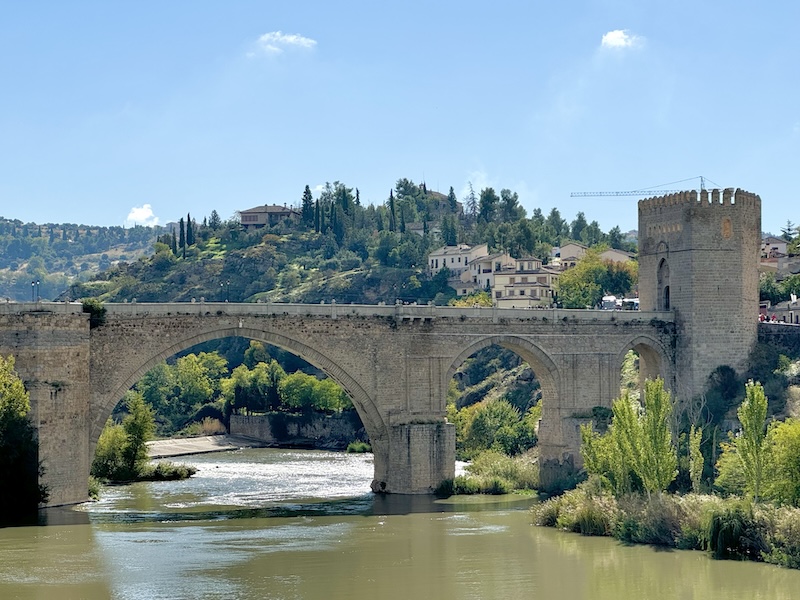
… you’ll be rewarded with some really nice views of Toledo, including its ancient bridges across the river Tajos.
Disclaimer: We have been invited by the Spanish Tourism Board and Castilla-La Mancha to travel to Toledo. All opinions are my own.


